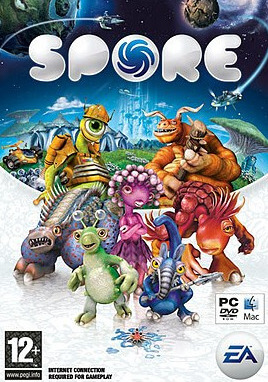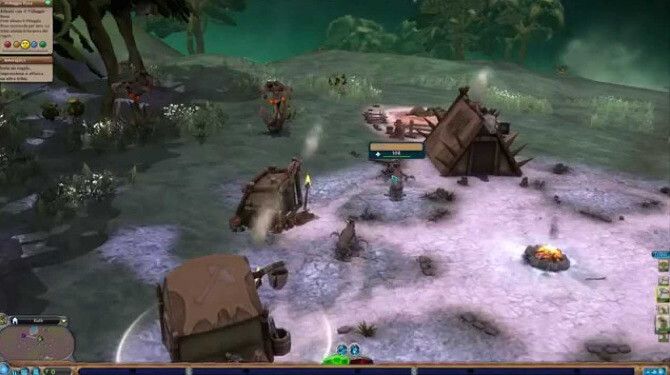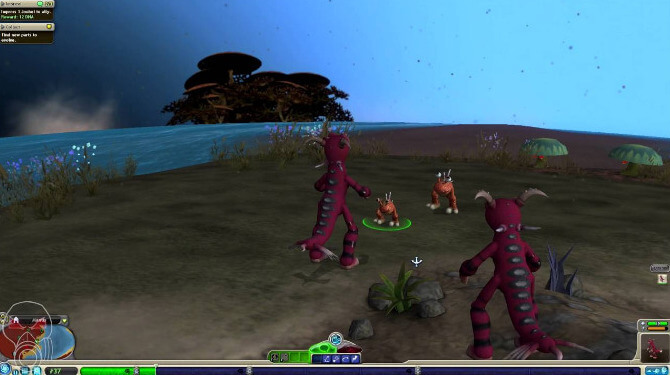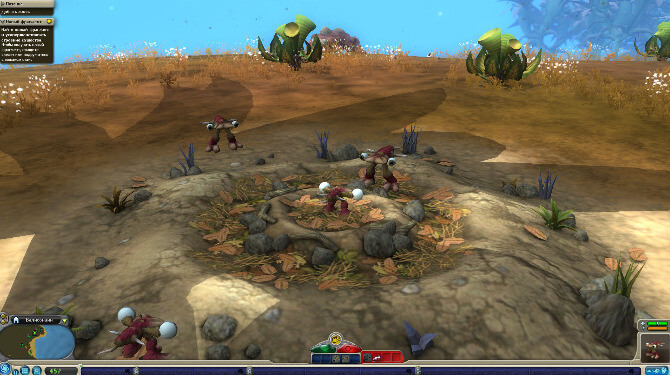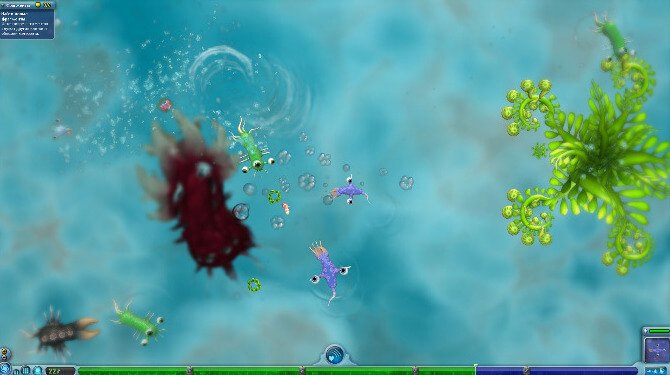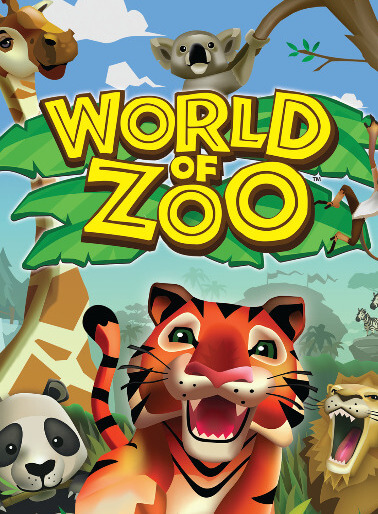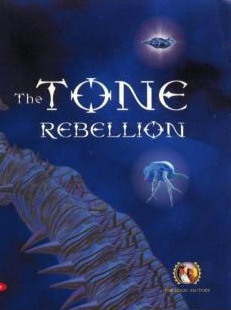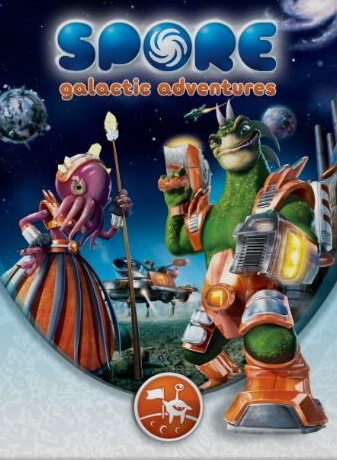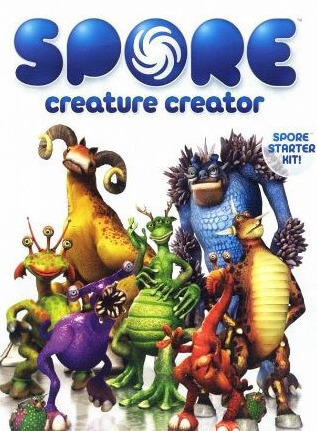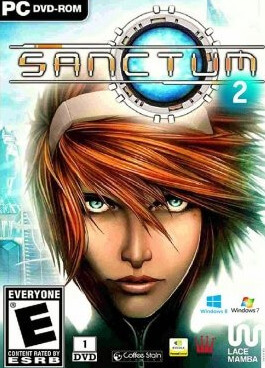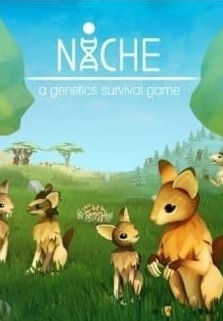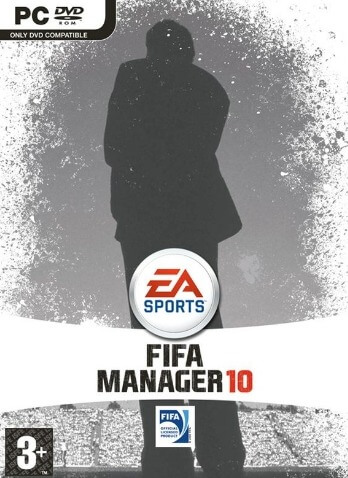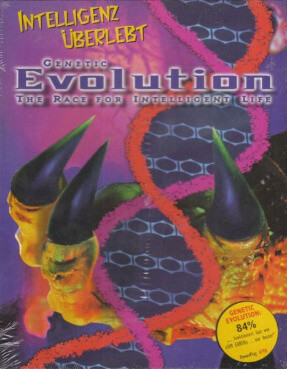Unlike many other Maxis games, Spore has a primary win condition, which is obtained by reaching a supermassive black hole placed at the center of the galaxy and receiving a "Staff of Life". However, the player may continue to play after any goal has been achieved. The first four phases of the game, if the player uses the editors only minimally, will take up to 15 hours to complete, but can take as little as one or two hours. Note that there is no time limit for any stage: the player may stay in a single stage as long as they wish, and progress to the next stage when ready. At the end of each phase, the player's actions cause their creature to be assigned a characteristic, or consequence trait. Each phase has three consequence traits, usually based on how aggressively or peacefully the phase was played. Characteristics determine how the creature will start the next phase and give it abilities that can be used later in the game.
Stages
Spore is a game that is separated into stages, each stage presenting a different type of experience with different goals to achieve. The five stages are the Cell Stage, the Creature Stage, the Tribal Stage, the Civilization Stage, and the Space Stage. Once the primary objective is completed, the player has the option to advance to the next stage, or continue playing the current stage.
Cell Stage
The Cell Stage (sometimes referred to as the tide pool, cellular, or microbial stage) is the very first stage in the game, and begins with a cinematic explanation of how the player's cell got onto the planet through the scientific concept of panspermia, with a meteor crashing into the ocean of a planet and breaking apart, revealing a single-celled organism. The player guides this simple microbe around in a 3D environment on a single 2D plane, reminiscent of Flow, where it must deal with fluid dynamics and predators, while eating meat chunks or plants. The player may choose whether the creature is a herbivore or carnivore prior to starting the stage. The player can find "meteor bits" (apparently from the aforementioned panspermic meteor) or kill other cells to find parts that upgrade their creature by adding abilities such as electricity, poison or other parts. Once the microbe has found a part, the player can call a mate to enter the editor, in which they can modify the shape and abilities of the microbe by spending "DNA points" earned by eating organisms in the stage.
The cell's eating habits in the Cell Stage directly influence its diet in the Creature Stage, and only mouths appropriate to the diet (Herbivore, Carnivore, or Omnivore) established in the Cell Stage will become available in the Creature Stage. Once the player decides to progress to the next stage, the creature editor appears, prompting the user to add legs before the shift to land. The Creature editor differs in that it gives the player the ability to make major changes to the creature's body shape and length, and place parts in three-dimensional space instead of a top-down view as in the Cell editor.
Creature Stage
In the Creature Stage, the player creates their own land creature intended to live on a single continent. If the player attempts to swim to another island, an unidentified monster eats the player, and the player is warned not to come again. The biosphere contains a variety of animal species which carnivorous and omnivorous creatures can hunt for food, and fruit-bearing plants intended for herbivores and omnivores. The player creature's Hunger becomes a measured stat as well as its Health in this stage; depletion of the Hunger meter results in Health depletion and eventual death of the player creature unless food is eaten.
In the Creature Stage, the player has a home nest where members of their own species are located. The nest is where the player respawns following death, and acts as a recovery point for lost HP. Other species' nests are spread throughout the continent. While interacting with them, the player can choose to be social or aggressive; how the player interacts with other creatures will affect their opinion of the player's species. For instance, by mimicking their social behaviors (singing, dancing etc.), NPC creatures will eventually consider the player an ally, but if the player harms members of their species, they will flee or become aggressive upon sighting them. Epic creatures, which are rare, aggressive creatures more than twenty times the player's height, feature prominently in the Creature Stage. The player cannot use social interactions with an Epic creature. There are also Rogue creatures which may be befriended or attacked. Additionally, spaceships may appear in this stage and abduct a creature.
Progress in the Creature Stage is determined by the player's decisions on whether to befriend or attack other species, and to which degree; these decisions will affect the abilities of the player's species in subsequent stages of the game. Successful socialization and hunting attempts will give DNA Points, which may be spent on many new body parts. The player will also be rewarded with multiple DNA points for allying with or completely extincting a species. Placing new parts in the Creature editor comes at the expense of DNA points; more expensive parts will further upgrade the player creature's abilities for either method of interaction, as well as secondary abilities such as flight, speed or boosted health. After the player is finished editing, a newly evolved generation of creatures will be present in the home nest as the player's creature hatches. As the player's creature befriends or hunts more creatures, its intelligence and size increases until it is able to form a tribe.
